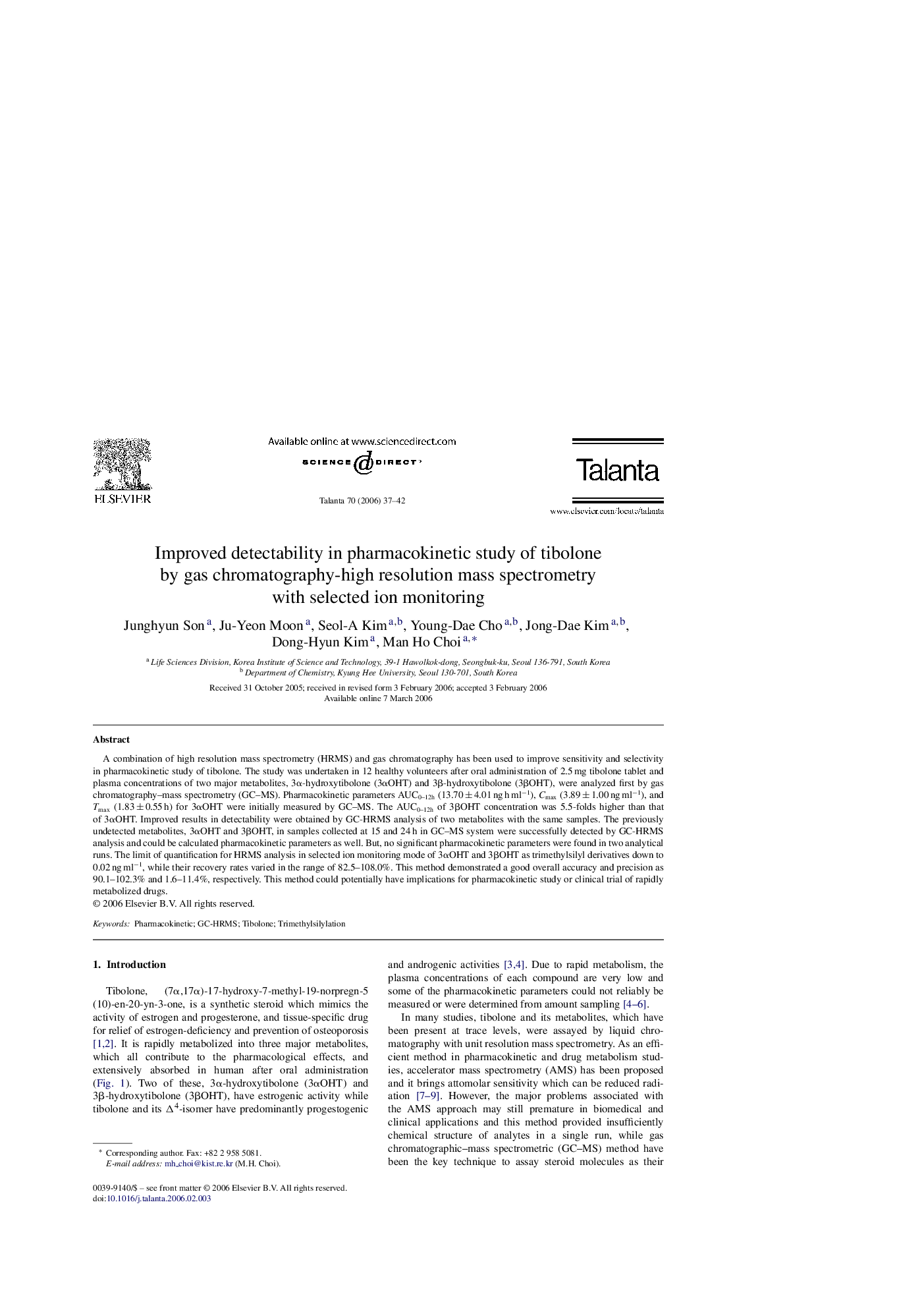| Article ID | Journal | Published Year | Pages | File Type |
|---|---|---|---|---|
| 1244454 | Talanta | 2006 | 6 Pages |
Abstract
A combination of high resolution mass spectrometry (HRMS) and gas chromatography has been used to improve sensitivity and selectivity in pharmacokinetic study of tibolone. The study was undertaken in 12 healthy volunteers after oral administration of 2.5 mg tibolone tablet and plasma concentrations of two major metabolites, 3α-hydroxytibolone (3αOHT) and 3β-hydroxytibolone (3βOHT), were analyzed first by gas chromatography-mass spectrometry (GC-MS). Pharmacokinetic parameters AUC0-12h (13.70 ± 4.01 ng h mlâ1), Cmax (3.89 ± 1.00 ng mlâ1), and Tmax (1.83 ± 0.55 h) for 3αOHT were initially measured by GC-MS. The AUC0-12h of 3βOHT concentration was 5.5-folds higher than that of 3αOHT. Improved results in detectability were obtained by GC-HRMS analysis of two metabolites with the same samples. The previously undetected metabolites, 3αOHT and 3βOHT, in samples collected at 15 and 24 h in GC-MS system were successfully detected by GC-HRMS analysis and could be calculated pharmacokinetic parameters as well. But, no significant pharmacokinetic parameters were found in two analytical runs. The limit of quantification for HRMS analysis in selected ion monitoring mode of 3αOHT and 3βOHT as trimethylsilyl derivatives down to 0.02 ng mlâ1, while their recovery rates varied in the range of 82.5-108.0%. This method demonstrated a good overall accuracy and precision as 90.1-102.3% and 1.6-11.4%, respectively. This method could potentially have implications for pharmacokinetic study or clinical trial of rapidly metabolized drugs.
Related Topics
Physical Sciences and Engineering
Chemistry
Analytical Chemistry
Authors
Junghyun Son, Ju-Yeon Moon, Seol-A Kim, Young-Dae Cho, Jong-Dae Kim, Dong-Hyun Kim, Man Ho Choi,
